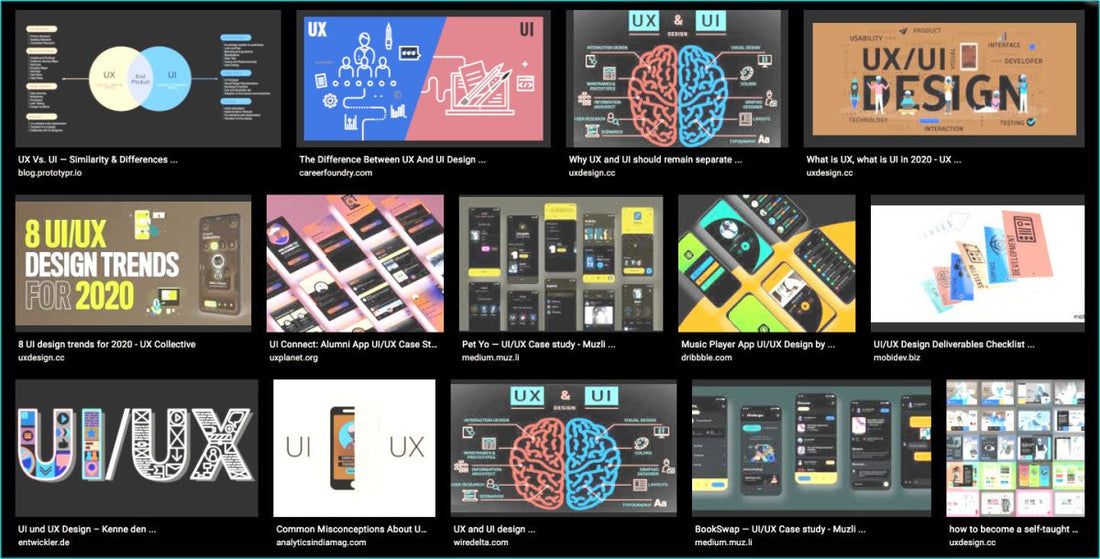First, there was graphic design. All you had to do was say the word “design,” and graphic design would come to mind.
But nowadays, we live in the digital world with computers, phones, and tablets. With these mobile devices, people can interact with glowing screens and technology, thus defining “design” a different way. And with “design” evolving with technology, we already see the “new” design industry.
To understand the evolution of design industry, we have to look at graphic design, User Interface (UI), and User Experience (UX), as if they were people living in the same house. We have to look at their meaning, and how they relate to each other:
Graphic Design
“Graphic design is considered the root of all visual design,” says Paula Lucas, a tech blogger at Origin writings and Next coursework. “Such designs start with graphic design, because it decides how things should look.”
Here’s what graphic designers do in their work:
- Choose the colors and fonts
- Arrange elements (i.e. images and text blocks) in layouts
- Can be used for online (website and mobile apps) or printed materials (book covers, magazine ads, etc.)
Although there’s a demand for graphic designers, eventually, companies will want to see something more in talent, rather than layouts that are static and non-interactive.
User Interface (UI)
User Interface design focuses on the interactive elements in digital media (computer, tablet or smartphone), such as drop-down menus, form fields, clickable elements, animations, button styling, etc. In other words, UI design expands on where graphic design leaves off. UI determines the way things that people use and interact with look, even when static images are involved.
User Experience (UX)

Source: https://www.interaction-design.org/literature/article/the-7-factors-that-influence-user-experience
“User experience differs from both graphic design and UI, because it takes into account the logic and structure of the interactive elements,” says Zak Webster, a UX writer at Phd kingdom and Academic brits. “UX is the actual framework that a designer uses to define a problem, think up solutions for that problem, and validate the right solutions.”
Here are the tasks that UX designers usually take on, on a regular basis:
- Delivers prototypes, wireframes, site maps, flows, and other artifacts to the UI team
- Uses many tools and methods to improve user experience
- Uses analysis to determine whether or not the product produces the desired result
“UX is involved in two phases: research and validation,” adds Webster. “In the research phase, UX designers work to better understand their intended users through competitive analysis, interviews with users, persona creation, wireframing, heuristic analysis and journey flows. Then, in the validation phase, designers test the product. If the product still exhibits problems, they get fixed right away, preventing expensive redesigns and reiteration.”
Why Companies Want UI And UX More Than Graphic Design
Although UI and UX are two separate fields, they’re usually treated as one entity to the tech industry. Therefore, as they tend to join forces on several occasions, they’re essential for companies looking for design and tech experts. Though, it’s like that because many hiring managers and recruiters assume that UI and UX designers are the same thing, meaning that you’ll see job ads labeled “UI/UX designer wanted” or “UI/UX designer.” Regardless, that goes to show that many companies want more UI and UX designers to work for them – expert or internship (with basic UX and UI principles understood).
So, is it fair to pair UI and UX? As of today, yes. However, it’s also okay to go into the roles separately.
Some people go into only UI, while others move towards UX. Or, some people like to do both. The important thing is that you focus on skill, tasks, and responsibilities, not the job title and salary.
In hindsight, graphic design might be a thing of the past in corporate’s eyes, and would rather be with the times with UI and UX.
Conclusion
We hope that this article demystifies graphic design, UI, and UX. In truth, this is just the beginning of understanding all three of these.
As UI/UX designers continue to be in high demand, there’s no better time to understand graphic design, UI, and UX – the basics and the advanced (depending on what you’re looking to get into for a career). And with technology growing more and more advanced, graphic design is becoming obsolete, paving the way for both UX and UI.







